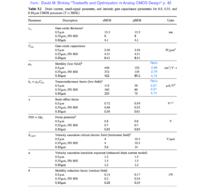erikwikt
Junior Member level 1

Hi
I apologize if this is´t the right forum for this kind of question but i have been searching the forum and have´t been able to find a suitable answer to my problem .
The problem is that I have to size CMOS transistors accordingly to a specific ratio to (under my understanding) get equal rise and fall time.
The design is a four input pseudo-NMOS-gate with the ratio for the NMOS W/L = (1.8/1.2) and for the PMOS W/L = (3.6/1.2) with the foundery of 0.25um.
I just want to be clear that im not looking for the strait up answer to my problem but instead a push in the right direction..
Hope that you understand my description and that you have time to answer.
Best regards Erikwikt.
I apologize if this is´t the right forum for this kind of question but i have been searching the forum and have´t been able to find a suitable answer to my problem .
The problem is that I have to size CMOS transistors accordingly to a specific ratio to (under my understanding) get equal rise and fall time.
The design is a four input pseudo-NMOS-gate with the ratio for the NMOS W/L = (1.8/1.2) and for the PMOS W/L = (3.6/1.2) with the foundery of 0.25um.
I just want to be clear that im not looking for the strait up answer to my problem but instead a push in the right direction..
Hope that you understand my description and that you have time to answer.
Best regards Erikwikt.







